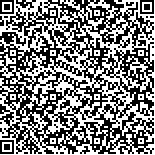下载中心
优秀审稿专家
优秀论文
相关链接
摘要

为提高对渤海海冰旋转和平移运动的监测精度,提出一种基于投影变换的相位相关跟踪方法。选取连续8景静止水色成像仪(GOCI)图像序列,根据特征图像窗口的投影变换构造辅助函数,通过寻求函数最优解得到旋转角度集合,选择修正相关系数确定最佳旋转角度,同时根据相位信息实现海冰样本间亚像素级别的平移跟踪,消除传统相位相关法中因忽略图像相频特性所造成的匹配误差。实验结果表明,以手动测量的旋转角度为基准,该方法和传统相位相关法的旋转监测均方根误差的最大值/平均值分别为0.59/0.50与1.41/0.94,跟踪速度提高了50.6%;海冰平移运动的速度矢量与辽东湾的现场实测数据及历史资料记录数据基本一致。该方法对渤海海冰旋转和平移运动具有较好的跟踪效果。
The Bohai Sea is located in the sea area of China with the highest latitude. This region is an important economic development zone in China. However, sea ice and its drift often block shipping vessels, destroy offshore structures, and limit development of the marine industry. Thus, sea ice monitoring techniques must be developed. Phase correlation based on polar transformation is extensively applied to image registration and sea ice tracking because of its robustness; however, this method results in various forms of noise and is insensitive to illumination changes. In addition, this approach can capture the translational and rotational motions of sea ice. Nevertheless, polar coordinate transformation and its subsequent operation extract amplitude information alone and ignore phase characteristics, which determine the position of each frequency. Consequently, errors in the matching results significantly increased. Moreover, traditional phase correlation involves several Fourier transformation and inverse transformation, which may increase computational burden and reduce tracking efficiency. By considering the limitations of sea ice tracking through phase correlation, this paper presents another approach for phase correlation based on projection transformation by combining the unique characteristics of sea ice in the Bohai Sea based on GOCI to track and monitor sea ice motion.
First, sea ice samples with identified; stable characteristics were quantitatively selected and projected into the one-dimensional space to minimize the function of rotational components. The characteristics of individual images and the relationship among them were fully considered. This step is crucial for setting appropriate correlation values to discriminate good angles from mixed ones. Next, the measured errors generated from the two methods were compared and analyzed based on the manual tracking results. The translation components can be determined from differences among the phase representatives of the cross power spectral function and extended to the sub-pixel level. Outliers should be excluded during the entire process by using correlation coefficients, visual inspection, and two-way matching. Finally, the derived sea ice motion in the Bohai Sea was analyzed with insitu data and historical records.
Results show that the maximum/average of root-mean-square error between the rotation angles via the proposed method and manual measurements is 0.59/0.50, whereas that between the traditional technique and manual values is 1.41/0.94. The running speed increased by 50.6%. In terms of translation, the sea ice motion field agrees well with insitu data and historical records of the Bohai Sea.
Recent developments in local research on sea ice motion usually ignore the rotational condition. This paper presents a method that combines phase correlation and projection transformation based on GOCI to simultaneously track and monitor sea ice rotation and translation in the Bohai Sea. Projection transformation replaces the polar coordinates, thereby improving the matching errors generated from the traditional method. Sea ice translation is derived from phase information in terms of image feature windows. This method can efficiently track sea ice motion.

